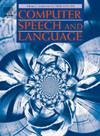基于图卷积网络和交互聚合注意力的方面级情感分析
IF 3.4
3区 计算机科学
Q2 COMPUTER SCIENCE, ARTIFICIAL INTELLIGENCE
引用次数: 0
摘要
情感分析一直是人工智能领域的一项重要任务,而方面级情感分析涉及到细粒度的情感分析。近年来,基于句子依存树的图卷积网络(GCNs)在方面级情感分析中得到了广泛应用。由于GCNs具有良好的聚合效果,可以有效地聚合相邻节点的信息。然而,以往许多关于图神经网络的研究只关注节点之间的信息,没有有效地挖掘方面与句子之间的联系,也没有突出方面相关性高的部分。为了解决这个问题,我们提出了一个新的GCN。在构建基于依赖树的图时,在每个节点上添加情感信息和位置索引信息来增强图。此外,我们使用了交互式聚合注意机制,利用GCN中与方面和句子之间的连接相关的聚合信息来突出重要的部分,使模型能够充分学习到方面和句子之间的关系。最后,我们在四个公共基准数据集上验证了我们的模型,并对最先进的方法进行了改进。本文章由计算机程序翻译,如有差异,请以英文原文为准。
Aspect-level sentiment analysis based on graph convolutional networks and interactive aggregate attention
Sentiment analysis has always been an important task in the artificial intelligence field, and aspect-level sentiment analysis involves fine-grained sentiment analysis. Recently, graph convolutional networks (GCNs) built on sentence dependency trees have been widely used in aspect-level sentiment analysis. Because GCNs have good aggregation effects, they can efficiently aggregate the information of neighboring nodes. However, many previous studies concerning graph neural networks only focused on the information between nodes and did not effectively explore the connections between aspects and sentences or highlight the parts with high aspect relevance. To address this problem, we propose a new GCN. When constructing a dependency tree-based graph, affective information and position index information are added to each node to enhance the graph. In addition, we use an interactive aggregate attention mechanism, which utilizes the aggregated information related to the connections between aspects and sentences from the GCN to highlight the important parts so that the model can fully learn the relationships between aspects and sentences. Finally, we validate our model on four public benchmark datasets and attain improvements over the state-of-the-art methods.
求助全文
通过发布文献求助,成功后即可免费获取论文全文。
去求助
来源期刊

Computer Speech and Language
工程技术-计算机:人工智能
CiteScore
11.30
自引率
4.70%
发文量
80
审稿时长
22.9 weeks
期刊介绍:
Computer Speech & Language publishes reports of original research related to the recognition, understanding, production, coding and mining of speech and language.
The speech and language sciences have a long history, but it is only relatively recently that large-scale implementation of and experimentation with complex models of speech and language processing has become feasible. Such research is often carried out somewhat separately by practitioners of artificial intelligence, computer science, electronic engineering, information retrieval, linguistics, phonetics, or psychology.
 求助内容:
求助内容: 应助结果提醒方式:
应助结果提醒方式:


